#basketball shoes market report
Text
With their new majority, House Republicans are planning to take on “woke capitalism.”
“Republicans and their longtime corporate allies are going through a messy breakup as companies’ equality and climate goals run headlong into a G.O.P. movement exploiting social and cultural issues to fire up conservatives,” Bloomberg reports. “Most directly in the G.O.P. cross hairs is the U.S. Chamber of Commerce, which is under pressure from the likely House Speaker Kevin McCarthy to replace its leadership after the nation’s biggest business lobby backed some Democratic candidates.”
I wrote last year about this notion of “woke capitalism” and the degree to which I think this “conflict” is little more than a performance meant to sell an illusion of serious disagreement between owners of capital and the Republican Party. As I wrote then, “the entire Republican Party is united in support of an anti-labor politics that puts ordinary workers at the mercy of capital.” Republicans don’t have a problem with corporate speech or corporate prerogatives as a matter of principle; they have a problem with them as a matter of narrow partisan politics.
That the governor of Florida, Ron DeSantis, railed this week against the “raw exercise of monopolistic power” by Apple, for example, has much more to do with the cultural politics of Twitter and its new owner, Elon Musk, than any real interest in the power of government to regulate markets and curb abuse. (In fact, DeSantis argued in his book, “Dreams From Our Founding Fathers,” that the Constitution was designed to “prevent the redistribution of wealth through the political process” and stop any popular effort to “undermine the rights of property.”)
Nonetheless, there is something of substance behind this facade of conflict. It is true that the largest players in the corporate world, compelled to seek profit by the competitive pressures of the market, have mostly ceased catering to the particular tastes and preferences of the more conservative and reactionary parts of the American public. To borrow from and paraphrase the basketball legend Michael Jordan: Queer families buy shoes, too.
Republicans have discovered, to their apparent chagrin, that their total devotion to the interests of concentrated, corporate capital does not buy them support for a cultural agenda that sometimes cuts against those very same interests.
Here it’s worth noting, as the sociologist Melinda Cooper has argued, that what we’re seeing in this cultural dispute is something of a conflict between two different segments of capital. What’s at stake in the “growing militancy” of the right wing of the Republican Party, Cooper writes, “is less an alliance of the small against the big than it is an insurrection of one form of capitalism against another: the private, unincorporated, and family-based versus the corporate, publicly traded, and shareholder-owned.” It is the patriarchal and dynastic capitalism of Donald Trump against the more impersonal and managerial capitalism of, for example, Mitt Romney.
To the extent that cultural reactionaries within the Republican Party have been caught unaware by the friction between their interests and those of the more powerful part of the capitalist class, they would do well to take a lesson from one of the boogeymen of conservative rhetoric and ideology: Karl Marx.
Throughout his work, Marx emphasized the revolutionary character of capitalism in its relation to existing social arrangements. It annihilates the “old social organization” that fetters and keeps down “the new forces and new passions” that spring up in the “bosom of society.” It decomposes the old society from “top to bottom.” It “drives beyond national barriers and prejudices” as well as “all traditional, confined, complacent, encrusted satisfactions of present needs, and reproduction of old ways of life.”
Or, as Marx observed in one of his most famous passages, the “bourgeois epoch” is distinguished by the “uninterrupted disturbance of all social conditions.” Under capitalism, “All that is solid melts into air, all that is holy is profaned, and man is at least compelled to face with sober senses his real conditions of life, and his relations with his kind.”
In context, Marx is writing about precapitalist social and economic arrangements, like feudalism. But I think you can understand this dynamic as a general tendency under capitalism as well. The interests and demands of capital are sometimes in sync with traditional hierarchies. There are even two competing impulses within the larger system: a drive to dissolve and erode the barriers between wage earners until they form a single, undifferentiated mass and a drive to preserve and reinforce those same barriers to divide workers and stymie the development of class consciousness on their part.
But that’s a subject for another day and a different column.
For now, I’ll simply say that the problem of “woke capitalism” for social and political conservatives is the problem of capitalism for anyone who hopes to preserve anything in the face of the ceaseless drive of capital to dominate the entire society.
You could restrain the power of capital by strengthening the power of labor to act for itself, in its own interests. But as conservatives are well aware, the prerogatives of workers can also undermine received hierarchies and traditional social arrangements. The working class, after all, is not just one thing, and what it seeks to preserve — its autonomy, its independence, its own ways of living — does not often jibe with the interests of reactionaries.
Conservatives, if their policy priorities are any indication, want to both unleash the free market and reserve a space for hierarchy and domination. But this will not happen on its own. The state must be brought to bear, not to restrain capital per se but to make it as subordinate as possible to the political right’s preferred social agenda. Play within those restraints, goes the bargain, and you can do whatever you want. Put differently, the right doesn’t have a problem with capitalism; it has a problem with who appears to be in charge of it.
There is even a clear strategy at work. If you can stamp out alternative ways of being, if you can weaken labor to the point of desperation, then perhaps you can force people back into traditional families and traditional households. But no matter how hard you try, you cannot stop the dynamic movement of society. It will churn and churn and churn, until eventually the dam breaks.
#us politics#news#the new york times#jamelle bouie#op eds#2022#Florida#gov. ron desantis#gop#Republicans#conservatives#karl marx#marxism#communism#socialism#Dreams From Our Founding Fathers#us constitution#labor#fuck capitalism#anti capitalism#capital#capitalism#anti capitalist#feudalism#worker's rights#working class
17 notes
·
View notes
Text
These PR disasters defined the course for certain brands in 2019
No matter how many precautions you take, sometimes things go out of control. You cannot possibly prevent every single disaster that might come your way and PR campaigns are no exceptions. PR campaigns sometimes go wrong too, and sometimes you’re in the middle of a murky PR disaster with no scope of salvation. It is important to learn from mistakes (yours and others) to ensure your brand and organization is best prepared to save its reputation. And sometimes, it is best if we learn from other’s mistakes. With the year ending, here’s a look at some of the biggest PR mishaps of 2019:
Tesla’s Cybertruck launch
This goes up #1 because it’s my favourite fail of all times. Not only did Cybertruck’s unbreakable windows smash, leaving Elon Musk very red-faced, but also turned around the entire PR mishap into a unique sales opportunity for Tesla. The company now has more than 200,000 pre-orders, all through the window smashing incident.
youtube
While the initial incident dipped Tesla’s stock prices, the PR and media curiosity around Cybertruck eventually led to the huge spike in intrigue seen in the form of pre-orders. This is a one-off instance of “Any publicity is good publicity” that just turned out great for Cybertruck eventually.
The case of a split Nike shoe and a pregnancy debacle
youtube
The world’s largest and one of the most revered sports apparel brand suffered a major embarrassment this year when basketball player Zion Williamson’s Nike show fell apart during one of the biggest games of the year. He even ended up spraining his knee as a result of the mishap. This could have been a product liability case for Nike, let alone embarrassment in front of millions of views. The “Just Do It” brand has been known to be motivational and aspirational for people across the globe, this incident led to their stocks falling 1% on that trading date. Even with small incidents like a shoe breaking apart, it means a brand instantly loses an amount of trust and market cap among consumers.
Apart from that, the revered brand also was caught up in a compensation case around payments. It was reported that Nike would reduce the payments towards athletes if their performances fell short (even during pregnancy/childbirth). This opened a can of worms with regard of double standards. The company faced major backlash over cutting compensation during pregnancy and childbirth. Later, the company worked towards changing their policies.
Gillette’s “The Best Men Can Be” campaign
youtube
Admittedly, this campaign by Gillette has been one of the bravest and clutter breaking campaign in the post #MeToo era. While the intention of the popular razor company was to start a conversation about men holding each other accountable, the campaign did not go down too well with their core target audience – men. This ad campaign is split in half and half with its appraise as well as criticism. The internet is abuzz with equal amounts of praise and backlash. MarketingWeek claimed the ad backfired on the brand and affected sales metrics.
The Great Indian CAA-NRC Uproar
Closer home, nothing has hit the country like the recent uproar over the Citizenship Amendment Bill and National Registry of Citizens. With millions out on the roads protesting the government’s move, this has probably snowballed into the biggest PR crisis for Bharatiya Janata Party in a very long time. While the future of the act is undecided at the time of writing of this article, people will look back as this moment being a landmark positioning factor for the political party in coming elections.
With 2020 inching closer, let’s hope they find recourse that helps in rebuilding brand credibility and equity.
2 notes
·
View notes
Text
Basketball Shoes Market Report: Opportunities and Challenges (2023-2032)

The Basketball Shoes market is projected to grow from USD 2756.25 million in 2024 to USD 3683.1 million by 2032, reflecting a compound annual growth rate (CAGR) of 3.69%.
Basketball shoes are a critical component of an athlete's performance on the court, designed to provide the necessary support, stability, and traction needed for the fast-paced and physically demanding nature of the game. These shoes are engineered with features that cater specifically to the movements and actions typical of basketball, such as quick cuts, jumps, and sudden stops. The design of basketball shoes typically includes a high-top silhouette that offers ankle support, crucial for preventing injuries like sprains during lateral movements. The soles are crafted with durable rubber and a tread pattern that enhances grip on the court, helping players maintain control during quick transitions and sharp pivots.
Cushioning is another vital aspect, with many basketball shoes incorporating advanced technologies such as air or gel pockets, foam, or specialized midsoles to absorb the impact from frequent jumping and running. This cushioning not only improves comfort but also reduces the risk of fatigue and injury over prolonged play.
In addition to functionality, basketball shoes have become a significant part of fashion and culture, especially influenced by endorsements from professional athletes. Signature lines from players like Michael Jordan, LeBron James, and Kobe Bryant have transcended the sport to become iconic symbols of style, with many shoes gaining popularity as casual wear. These endorsements have created a substantial market for basketball shoes, where performance meets fashion, driving brands like Nike, Adidas, Under Armour, and Puma to constantly innovate both in design and technology. The materials used in basketball shoes have also evolved, with lightweight, breathable fabrics and synthetic uppers replacing traditional leather to enhance agility and comfort.
The basketball shoes market has revealed several key findings that highlight its dynamic nature and growth potential. These findings are shaped by evolving consumer preferences, technological advancements, and the global expansion of basketball as a popular sport.
Growing Demand for Performance and Innovation: The market is increasingly driven by the demand for high-performance basketball shoes that incorporate advanced technologies. Consumers are looking for shoes that offer enhanced cushioning, ankle support, and superior traction to improve on-court performance. Innovations such as lightweight materials, breathable fabrics, and advanced cushioning systems are becoming essential features, with major brands continuously investing in research and development to meet these needs.
Influence of Athlete Endorsements: Athlete endorsements continue to play a significant role in the basketball shoes market. Signature shoe lines from top NBA players like Michael Jordan, LeBron James, and Stephen Curry are major sales drivers, with these products often becoming highly sought-after both for their performance features and their cultural significance. These endorsements not only boost brand visibility but also influence consumer purchasing decisions, particularly among younger demographics.
Rise of Sneaker Culture and Fashion Influence: The intersection of basketball shoes with fashion and streetwear culture has significantly expanded the market. Basketball shoes are no longer just sports equipment; they have become lifestyle products. Limited edition releases, collaborations with designers, and retro models have created a thriving market for collectors and fashion enthusiasts. This trend has also led to an increase in demand for customization options, allowing consumers to personalize their shoes to reflect their individual style.
Regional Market Growth and Expansion: The basketball shoes market is witnessing significant growth across various regions, particularly in North America and Asia Pacific. In North America, the strong presence of the NBA and the popularity of basketball as a sport drive consistent demand. Meanwhile, the Asia Pacific region is experiencing rapid growth due to the increasing popularity of basketball in countries like China and the rising influence of Western sports culture. These regions are also seeing a growing middle class with disposable income, further fueling market expansion.
Sustainability and Eco-Friendly Initiatives: As consumers become more environmentally conscious, there is a growing demand for sustainable and eco-friendly basketball shoes. Brands are responding by incorporating recycled materials, reducing waste in the manufacturing process, and promoting products with a lower environmental footprint. This trend is expected to gain momentum as sustainability becomes a more significant factor in consumer purchasing decisions.
Competitive Landscape and Market Fragmentation: The basketball shoes market is highly competitive, with key players such as Nike, Adidas, Under Armour, and Puma dominating the industry. However, the market is also fragmented with the presence of numerous smaller brands and emerging companies that are gaining traction by offering niche products or focusing on specific market segments. This competitive landscape is driving continuous innovation and strategic partnerships as brands strive to differentiate themselves and capture market share.
Key Player Analysis
361 Degrees International Limited
ASICS
ECCO
Converse
Vans
PUMA SE
China Dongxiang (Group) Co., Ltd.
Nike Inc.
Under Armour, Inc.
Adidas Group
Li Ning Company Ltd.
New Balance
Others
More About Report- https://www.credenceresearch.com/report/basketball-shoes-market
The basketball shoes market, while dynamic and growing, faces several challenges that could impact its trajectory and the strategies of key players within the industry.
Intense Competition and Market Saturation: The basketball shoes market is highly competitive, with major brands like Nike, Adidas, Under Armour, and Puma dominating the space. This intense competition creates pressure on companies to continuously innovate and differentiate their products. However, the market is becoming increasingly saturated, making it difficult for new entrants and smaller brands to establish a foothold. Even established brands face the challenge of maintaining their market share and brand loyalty amidst a plethora of choices available to consumers.
Rising Production Costs and Supply Chain Disruptions: The production of basketball shoes involves complex supply chains, often spread across multiple countries. Rising costs of raw materials, labor, and transportation are significant challenges, particularly in light of recent global supply chain disruptions caused by events such as the COVID-19 pandemic. These disruptions have led to delays, increased costs, and challenges in meeting consumer demand, especially for high-demand or limited-edition releases. Managing these costs while maintaining product affordability is a persistent challenge for companies in the market.
Counterfeiting and Brand Dilution: The global market for basketball shoes, particularly for popular brands and limited-edition releases, is plagued by the issue of counterfeit products. These fake products not only undermine brand reputation and consumer trust but also result in significant revenue losses for legitimate manufacturers. The prevalence of counterfeit basketball shoes is particularly challenging in online marketplaces, where it can be difficult for consumers to distinguish between genuine and fake products. Brands must invest heavily in anti-counterfeiting measures and consumer education to combat this issue.
Sustainability and Environmental Concerns: As consumer awareness of environmental issues grows, there is increasing pressure on companies to adopt sustainable practices in the production of basketball shoes. This includes using eco-friendly materials, reducing carbon footprints, and ensuring ethical labor practices. However, transitioning to more sustainable production methods can be costly and complex, particularly for brands that rely on large-scale manufacturing. Balancing sustainability with cost-effectiveness and maintaining product performance standards is a significant challenge for the industry.
Shifting Consumer Preferences and Trends: The basketball shoes market is heavily influenced by fashion trends and consumer preferences, which can change rapidly. What is popular today might be out of favor tomorrow, creating a challenge for brands to stay ahead of trends and meet the ever-changing demands of consumers. Additionally, the rise of athleisure and the blending of sportswear with casual fashion have blurred the lines between performance-oriented products and fashion items, requiring brands to navigate this evolving landscape carefully. Understanding and predicting these shifts is crucial for brands to remain relevant and competitive.
Economic Uncertainty and Purchasing Power: Economic downturns and fluctuations in consumer purchasing power can significantly impact the basketball shoes market. During periods of economic uncertainty, consumers may prioritize essential purchases over discretionary spending on items like basketball shoes, particularly premium or luxury models. This can lead to decreased sales and a more challenging retail environment, forcing brands to reconsider pricing strategies, promotional activities, and product offerings to attract budget-conscious consumers.
Segments:
Based on Product Type:
High-top shoes
Mid-top shoes
Low-top shoes
Based on Application:
Sports
Lifestyle
Competition
Based on Closure Type:
Laces
Velcro
Straps
Zippers
Based on Consumer Orientation:
Men
Women
Based on Sales Channel:
Multi-brand stores
Independent small stores
Online retailers
Other sales channels
Browse the full report – https://www.credenceresearch.com/report/basketball-shoes-market
Browse Our Blog: https://www.linkedin.com/pulse/basketball-shoes-market-landscape-trends-drivers-forecast-z0inf
Contact Us:
Phone: +91 6232 49 3207
Email: [email protected]
Website: https://www.credenceresearch.com
0 notes
Text
Adidas has recently announced an extension of its contract with Minnesota Timberwolves and Team USA Basketball star, Anthony Edwards. This decision, confirmed by CEO Bjørn Gulden during the company’s quarterly earnings call, underscores the brand's strategy to expand its presence in North America, particularly in the basketball category.
Central to this strategy is Edwards’s AE 1 signature sneaker, which has gained monumental popularity since its launch at the end of last year. The sneaker stands out with its unique design and clever marketing, contributing to a revitalization of Adidas' basketball line and the signature sneaker market at large. Remarkably, the AE 1 has sold out on all drops in most sizes and colorways, boasting over 17,500 trades on StockX, where it commands an average resale price of $126, representing a 22% increase over its retail price.
Edwards is pivotal in Adidas's plans to elevate its basketball category, directly influencing its growth objectives in the region. At just 22 years old, Edwards has already led the Timberwolves to their best playoff performance in two decades. According to reports, the new deal may earn him up to $50 million.
As the market for signature basketball shoes revives, fueled by younger athletes and increased competition from brands like Anta and Li-Ning, Adidas seems poised to make significant strides in the industry. This contract extension not only reinforces the brand's commitment to basketball but also to cultural relevance among consumers.
0 notes
Text
The market for sports technology market has been expanding steadily in recent years, and between 2023 and 2030, it is anticipated to rise at a CAGR of 21.80%. The market was estimated to be worth USD 13514.8 million in 2022, and it is anticipated to be worth USD 65461.79 million in 2030.The sports technology market has experienced a transformative evolution over the past decade, driven by advancements in digital technologies, increasing consumer demand for enhanced viewing experiences, and the relentless pursuit of athletic excellence. This rapidly growing sector encompasses a wide array of applications, from performance analytics and wearable devices to augmented reality (AR) and virtual reality (VR) experiences, significantly impacting athletes, teams, and fans alike.
Browse the full report at https://www.credenceresearch.com/report/sports-technology-market
Performance Analytics and Wearable Technology
One of the most significant developments in sports technology is the rise of performance analytics. Modern sports teams and athletes leverage data analytics to gain insights into their performance, enabling them to fine-tune their training regimens and strategies. Wearable technology plays a crucial role in this domain. Devices such as GPS trackers, heart rate monitors, and smart clothing collect real-time data on an athlete’s biometrics and movements.
For instance, in professional football, GPS vests track players’ positions, speeds, and distances covered during training and matches. This data helps coaches assess player fitness, prevent injuries, and develop game strategies. Similarly, in basketball, smart shoes equipped with sensors analyze players’ jump heights, footwork, and overall performance, providing valuable feedback for improvement.
Augmented and Virtual Reality
AR and VR technologies have revolutionized the way fans engage with sports. AR enhances live experiences by overlaying digital information onto the real world. For example, during live broadcasts, AR can display real-time statistics, player information, and interactive graphics on the screen, enriching the viewing experience. Fans at stadiums can use AR apps to get detailed information about the players and the game, creating a more immersive experience.
VR, on the other hand, provides an entirely new dimension to sports engagement. VR headsets allow fans to experience games as if they were on the field, offering 360-degree views and interactive experiences. This technology is also used in athlete training, where VR simulations help players practice in a virtual environment that mimics real-game scenarios. For instance, quarterbacks in American football can use VR to practice reading defenses and making split-second decisions without the physical wear and tear of actual practice.
Fan Engagement and Experience
The sports technology market has significantly enhanced fan engagement. Social media platforms, live streaming services, and dedicated sports apps enable fans to stay connected with their favorite teams and athletes around the clock. Innovations like interactive polls, live chats, and exclusive behind-the-scenes content create a sense of community and belonging among fans.
Esports, a burgeoning segment of the sports technology market, has also seen tremendous growth. Competitive gaming has attracted millions of viewers worldwide, with professional esports tournaments offering substantial prize pools and sponsorship deals. The integration of streaming platforms like Twitch and YouTube Gaming has made it easier for fans to watch and interact with their favorite esports players, further blurring the lines between traditional sports and digital entertainment.
Health and Safety
Health and safety are paramount in sports, and technology has played a crucial role in protecting athletes. Concussion detection systems, injury prevention tools, and rehabilitation technologies have become integral components of sports medicine. For example, smart mouthguards equipped with sensors can detect impacts and measure the risk of concussions in contact sports like rugby and hockey. These devices alert medical staff in real-time, ensuring prompt attention to potential injuries.
Rehabilitation technologies, such as robotic exoskeletons and AI-powered physical therapy platforms, aid in the recovery of injured athletes, helping them return to peak performance faster and safer. The use of motion capture technology in rehabilitation exercises allows for precise monitoring of an athlete’s progress and adjustments to their recovery plan as needed.
Future Prospects
The future of the sports technology market looks promising, with continued advancements expected in AI, machine learning, and biometric monitoring. AI-powered analytics will become even more sophisticated, providing deeper insights into player performance and game strategies. The integration of IoT (Internet of Things) devices in sports equipment and facilities will enable seamless data collection and analysis, further enhancing training and fan experiences.
As technology continues to evolve, the sports industry must navigate challenges related to data privacy, ethical considerations, and the digital divide among different regions and sports disciplines. Nevertheless, the potential benefits of sports technology in improving athletic performance, enhancing fan engagement, and ensuring player safety are undeniable, making it an exciting frontier for innovation and growth.
Key Players
Apple, Inc.
Catapult Group
ChyronHego Corp.
Cisco Systems, Inc.
HCL Technologies Ltd.
IBM Corp.
Infosys Ltd.
Modern Times Group MTG
Oracle
Panasonic Corporation
SAP SE
Sony Corporation
Stats LLC
Telefonaktiebolaget LM Ericsson
Amazon Web Services Inc.
DELTATRE
Ernst & Young Global Limited
Genius Sports Group
Microsoft Corporation
SAS Institute Inc.
Sportradar AG
Synergy Sports
CBS Sports Digital
Draft Kings, Inc
Dream 11 (Sporta Technologies Pvt. Ltd.)
Dream Sports Group
FanDuel Group
Others
Segmentation
By Wearable Technology
Smart Wearables
Smart Clothing
Smart Glasses
By Athlete Performance Analysis
Performance Tracking Systems
Biomechanics Analysis
Video Analysis Software
By Sports Equipment Technology
Smart Equipment
Advanced Sports Gear
By Training and Coaching Tools
Virtual Reality (VR) and Augmented Reality (AR)
Training Apps and Platforms
Performance Analysis Software
By Fan Engagement and Experience
Fan Apps
Augmented Reality (AR) for Fans
Esports and Gaming
By Sports Data and Analytics
Sports Data Platforms
Sports Analytics Software
By Digital Broadcasting and Streaming
OTT (Over-The-Top) Sports Streaming
Live Commentary and Analysis
Digital Stadiums and Arenas
By Sports Medicine and Injury Prevention
Rehabilitation Technology
Sports Science and Medicine
By Sports Management and Administration
Sports Management Software
Ticketing and Venue Management
By Region
North America
The U.S.
Canada
Mexico
Europe
Germany
France
The U.K.
Italy
Spain
Rest of Europe
Asia Pacific
China
Japan
India
South Korea
South-east Asia
Rest of Asia Pacific
Latin America
Brazil
Argentina
Rest of Latin America
Middle East & Africa
GCC Countries
South Africa
Rest of the Middle East and Africa
Browse the full report at https://www.credenceresearch.com/report/sports-technology-market
About Us:
Credence Research is committed to employee well-being and productivity. Following the COVID-19 pandemic, we have implemented a permanent work-from-home policy for all employees.
Contact:
Credence Research
Please contact us at +91 6232 49 3207
Email: [email protected]
Website: www.credenceresearch.com
0 notes
Text
How Nike's Mistakes Led to Falling Share Prices and Stronger Rivals

Sportswear brand Nike, with its numerous strategic blunders like moving away from third-party retailers and focusing on stores of its own, has weakened the market position of the sportswear brand. Besides, decisions in restructuring have hurt the relationship with individual sports. Allowing younger rivals to take the lead, Nike's share price has moved to lows not seen since the COVID era.
Really, the iconic sportswear brand should have been blowing the doors off this Olympic year. Stars like Jude Bellingham, Emma Raducanu, Scottie Scheffler, and Rory McIlroy have been routinely spotted sporting Nike gear. Yet, for some unknown reason, the company is fighting for its breath instead of basking in success.Where the stock topped off in late 2021, Nike shares are down 59%—now back to where they were at the height of the COVID-19 lockdowns in March 2020. However, the shares saw a severe drop after he reported disappointing financial results on June 27. Shares of Nike fell 20% the next day, marking their worst single-day performance since 1980.Famous investment guru Jim Cramer asked on CNBC, "Can Nike still be saved? It does seem like a hopeless situation."Knowing this was an issue, Nike's taken action. Bloomberg reported that Nike is rehiring one of its vets, Tom Peddie, who spent 30 years at the company before retiring in 2020. He'll now lead the retail partnerships charge in an effort to rebuild those relationships with retailers like Foot Locker. The company had previously pulled some products from those retails, to focus on their own stores and online channels.— Craig Williams, President, Nike Geographies and Marketplace, believed in Peddie. He's here to help boost Nike's wholesale business and accelerate their marketplace strategy.Nike has also been making a big mistake by pulling products from third-party retailers to sell them in company-owned stores and websites. Nike Chief Executive John Donahoe, who took over in January 2020, had the impression that the move to shopping online, made by people while their countries were locked down during the pandemic, was going to be a permanent phenomenon. The upshot has been to leave third-party retailers free to stock products from younger rivals like Castore, Hoka, and On Running, as well as established competitors like New Balance.
Nike, like Adidas's mistake in 2018, was too reliant on a handful of products. For instance, making well, ordinary products, such as Air Force 1s, Air Jordan 1s, and Dunks, made them too commonplace. Now, dropping supplies of these names will not be easy to bring these premium qualities back. Further, sales of Converse dropped 18% in the latest quarter because of weak performance in North America and Europe.Some investors fear that the younger generation of customers is not that keen on superstars such as Michael Jordan, who hung up his basketball shoes in 2003. To quote Jim Cramer, some of the things that Nike used to do well are now what ails the brand.The second caution has to do with John Donahoe himself. He had spent his career in technology, and most of his executives that he brought along with him had the same background. The question in everyone's mind was wondering whether he would be too high-minded to have his shoes on the ground to run a sportswear brand.
There, too, he has the backing of Phil Knight, the de facto founder of Nike, who, after the latest numbers, came out with a statement in which he seems to believe in the company's future with Donahoe running the show.In summation, Nike has been besieged by strategic mistakes and changing market conditions. On the brighter side, with the leadership and a roadmap ahead boded by its leadership, there is hope for Nike to overcome such challenges and restore its strong market position.
Read the full article
0 notes
Text
The Impact of Sustainability on the Athletic Footwear Market: A Holistic Approach

The Athletic Footwear Market is estimated for 2023 for the forecast period 2023-2030, as highlighted in a new report published by Coherent Market Insights.
Market Overview:
Athletic footwear includes various shoes such as running shoes, basketball shoes, football boots, tennis shoes, and other sport-specific footwear. They provide protection, stability, and comfort during sports and fitness activities.
Market Dynamics:
The athletic footwear market is expected to exhibit significant growth due to rising health consciousness and increasing participation in sports and fitness activities among people globally. Moreover, technological advancements in footwear design and material to enhance performance are further contributing to the market growth. Players are focusing on developing lightweight, breathable shoes equipped with advanced features to attract more customers. Furthermore, growing young population and rising disposable income in developing countries are some of the key factors driving the demand for specialized athletic footwear.
Athletic Footwear Market Drivers: Growth in Healthy And Active Lifestyle Promotes Use of Athletic Footwear
Exercise and physical activities have become an integral part of people's lives. With growing health awareness, consumers are increasingly participating in various sports, fitness activities and outdoor recreation. Athletic shoes are considered essential for sports and workouts as they provide support, protection and comfort. Major sports brands have established strong presence in the market by launching fashionable yet functional shoes for different activities. Rise in marathon running, tennis, basketball and other sports has bolstered demand for specialized shoes. Growing youth population interested in adventure sports and extreme activities also contributes to market expansion.
Increased Consumer Spending On Premium Athletic Footwear
Higher disposable income allows consumers to spend more on quality athletic products. Leading brands introduce new designs, styles and technologies frequently which attract customers willing to pay premium prices. Rising living standards combined with fashion consciousness encourage investment in branded shoes beyond their functional usage. Premiumization is visible across products lines as sophisticated materials, unique colorways and celebrity endorsements justify higher costs. Online and in-store promotions, innovative store concepts and memberships have made premium offerings more accessible and aspirational for mainstream customers.
Athletic Footwear Market Restrain: Threat Of Counterfeiting And Pirated Products
Rampant production of counterfeit athletic shoes has dented sales of established brands. Fake products bearing similar designs and logos are easily available online and in physical markets at lower costs. Weak enforcement of intellectual property rights enables thriving counterfeit industry. Poor quality copies undermine brand value and customer trust over time. Counterfeiting reduces innovation incentives for original designers who see their ideas replicated without attribution. Large-scale counterfeiting also deprives governments of legitimate tax revenues. Although brands take legal actions, full elimination of fakes remains a challenge which limit the potential market size.
Athletic Footwear Market Opportunity: Growing E-Commerce Penetration Expands Reach
Online retail channels have revolutionized shopping experiences worldwide. Rising internet and smartphone usage particularly among young demographics boosts e-commerce adoption. Athletic brands leverage various digital platforms like their own websites and third party marketplaces to connect with wider audiences conveniently. Detailed product information, consumer reviews and interactive features aid online purchases. Efficient delivery networks ensure speedy doorstep service. Growing e-tail in developing regions with underserved physical markets opens new revenue avenues. Customized virtual shopping assisting personalized recommendations and fit also enhances customer stickiness on digital platforms. Omnichannel integration of online and offline retail presence optimizes consumer touchpoints.
Athletic Footwear Market Trends: Increased Emphasis On Sustainability And Social Responsibility
Rising environmental concerns have made sustainability a priority across industries. Athletic brands face pressures to enhance eco-friendliness of manufacturing, choose responsible materials and establish circular business models. Emphasis is growing on reducing carbon footprint and plastic waste. Some brands collaborate with recycling partners while others invest in green technologies. Similarly, fair compensation for factory workers and diversity & inclusion also influence buying decisions today. Transparency in sourcing and commitment to social causes helps firms connect with socially conscious customers. Sustainable innovations and responsible practices will play important roles going forward given evolving regulatory frameworks and stakeholder expectations.
0 notes
Text
Li-Ning Wade Son Of Flash Basketball Shoe Report and Review
The Li-Ning Wade Son of Flash is a noteworthy addition to the basketball shoe market, blending unique design elements with impressive performance features. As one of the top performers in the Li-Ning lineup, this shoe brings a lot to the court.
Design and MaterialsFit and PerformanceUnique FeaturesDurabilityPros and ConsPros:Cons:Conclusion
Design and Materials
With a sleek, modern design…

View On WordPress
0 notes
Text
Europe Sporting Goods Market Is Estimated To Witness High Growth Owing To Increasing Health and Fitness Awareness

The Europe Sporting Goods Market is estimated to be valued at US$ 153.7 Bn in 2022 and is expected to exhibit a CAGR of 6.8% over the forecast period 2023 to 2030, as highlighted in a new report published by Coherent Market Insights.
A) Market Overview:
The Europe Sporting Goods Market includes a diverse range of sports equipment and apparel, catering to various sports such as football, basketball, tennis, golf, and others. These goods are designed to enhance performance and provide comfort to athletes and enthusiasts. The market offers a wide range of products, including footwear, clothing, balls, protective gear, and fitness equipment.
The growing awareness about health and fitness among individuals is one of the primary driving factors for the market growth. With an increasing number of people participating in sports activities and adopting fitness regimes, the demand for sporting goods has witnessed significant growth. These goods aid in improving athletic performance, protecting against injuries, and providing comfort during physical activities.
B) Market Key Trends:
One key trend in the Europe Sporting Goods Market is the rising focus on sustainability and eco-friendly products. Consumers are becoming more conscious of the environmental impact of their purchases and are actively seeking products that align with their values. As a result, companies are introducing innovative products made from sustainable materials such as recycled plastics, organic cotton, and bio-based fabrics. For example, Adidas AG launched a collection of running shoes made from recycled ocean plastic in collaboration with Parley for the Oceans. This trend is expected to drive the demand for sustainable sporting goods in the market.
C) PEST Analysis:
Political: The political stability and favorable regulations in European countries support the growth of the sporting goods market. Governments often promote sports activities, leading to increased participation and demand for sporting goods.
D) Key Takeaways:
Market Size Related Content:
The Europe Sporting Goods Market is expected to witness high growth, exhibiting a CAGR of 6.8% over the forecast period. The increasing health and fitness awareness among individuals is driving the demand for sporting goods. For instance, the popularity of fitness activities such as running, cycling, and gym workouts has surged, leading to higher demand for appropriate footwear, clothing, and equipment.
Regional Analysis Related Content:
Europe is the fastest-growing and dominating region in the sporting goods market. The region has a strong sports culture and a large population actively participating in various sports activities. Additionally, events such as the UEFA European Championship, Wimbledon, Tour de France, and the Olympics drive the demand for sports equipment and apparel.
Key Players Related Content:
Key players operating in the Europe Sporting Goods Market include Adidas AG, Nike, Inc., Under Armour, Inc., PUMA SE, Amer Sports, Odlo, Hammer Sports, Polar Electro, KETTLER, and WaterRower. These players focus on innovation, product development, marketing strategies, and collaborations to maintain their market position and cater to the evolving customer preferences.
In conclusion, the Europe Sporting Goods Market is expected to witness significant growth due to the increasing health and fitness awareness among individuals. The rising demand for sustainable and eco-friendly products is also driving the market. Europe, with its strong sports culture and active population, dominates the market. Key players in the market are continuously striving to meet consumer demands through innovation and collaborations.
0 notes
Text
Athletic Footwear Market: Rising Valuation to Reach $165.0 Billion by 2030, Fueled by Strong CAGR of 4.2%
“athletic footwear market by type, end user, and distribution channel: global opportunity analysis and industry forecast, 2021–2030,”the global athletic footwear market was valued at $109.7 billion in 2020, and is projected to reach $165.0 billion by 2030, growing at a CAGR of 4.2% from 2021 to 2030. The running & walking shoes segment dominated the market in 2020, in terms of revenue.
Get Sample PDF Of This Report: https://www.alliedmarketresearch.com/request-sample/1397
Changing paradigm of educational system supports growth of the sports industry and industries dependent on it. In addition, rise in sports education and sports training in academics has significantly increased awareness toward sports and fitness. Thus, many schools/educational institutes offer training to students, providing them an opportunity to compete in various sports competitions. In addition, busy and hectic lifestyle, coupled with growing instances of consumers choosing outdoor activities such as adventure sports to unwind or break monotony of their daily life boosts the athletic footwear market growth. Furthermore, initiatives taken by various governments in countries such asIndia, and Australia to promote sports, health, and fitness have led to increased consciousness about sports and sports-related products such as sport shoes, running &walking shoes, and tracksuits, which, in turn, drives growth of the market.
Polyester, rubber, EVA foam, cotton, synthetic leather, and leather are the six main raw materialsused for manufacturing athletic footwear. There has been a continuous rise in prices of these raw materials in past few years. The prices of raw materials directly affect production cost of the products, thereby leading to increase in the market price of the finished product. This acts as a restraint for the athletic footwear industry.
The athletic footwear market is segmented on the basis of type, end user, distribution channel, and region. By type, it is categorized into sports shoes, running & walking shoes, hiking & backpacking shoes, and aerobic & gym wear shoes. By end user, it is segmented into men, women, and kids. Region wise it is classified into North America, Europe, Asia-Pacific, and LAMEA.
Inquiry Before Buying @ https://www.alliedmarketresearch.com/purchase-enquiry/1397
The key players operating in the athletic footwear market have adopted product launch, business expansion, and merger & acquisition as its key strategies to expand their market share, increase profitability, and remain competitive in the market. Leading players analyzed in the athletic footwear market analysis includes-Asics Corporation, Adidas AG, Puma, VF Corporation, Nike, Inc., FILA Korea, Ltd., New Balance, Inc., SKECHERS, Inc., K-Swiss, Inc., and Wolverine World Wide, Inc.
Key findings of the study
Asia-Pacific is a lucrative market, in terms of growth, on account of increasing disposable income, rising health awareness, and increasing demand for fashionable athletic footwear.
The men segment is the highest revenue-generating segment in the global athletic footwear market, followed by the women segment.
The soccer shoes segment is expected to be the fastest growing segment of athletic footwear market, followed by basketball shoes segment.
The hypermarkets/super markets segment is the dominating distribution channel worldwide in athletic footwear market.
LIMITED-TIME OFFER - Buy Now & Get Exclusive Discount on this Report @ https://www.alliedmarketresearch.com/checkout-final/83bfabfea639f8e4b1cfbb9411c8d4a0
0 notes
Text
Custom Shoes Market Trends, Growth, Size, Segmentation, Future Demands, Latest Innovation, Regional Forecast to 2032
As per newly released data by Future Market Insights (FMI), the Custom Shoes Market is estimated at USD 712 million in 2022 and is projected to reach USD 1454 million by 2032, at a CAGR of ~7.4% from 2022 to 2032.
Custom shoes are shoes that are manufactured to order. They may be created in any colour, style, or pattern desired by the purchaser. Custom shoes are crucial because they provide the wearer a distinct appearance and feel. Furthermore, because each pair of personalised shoes is unique, they frequently reflect the wearer’s individuality. The unique aspect is that each pair of custom shoes is produced specifically for the person who purchases them. Custom shoes may also be manufactured to fit any size, shape, or width of foot.
The introduction of fresh fashion trends in global culture is driving the demand for personalised shoes. Different shoes are currently utilised for various purposes and occasions. Using running shoes for running or jogging, as well as numerous sport shoes for other activities such as tennis shoes, skating shoes, basketball shoes, etc. is the newest fad.
Request Sample Report:
https://www.futuremarketinsights.com/reports/sample/rep-gb-16307
The growing need for personalization for such purposes is driving the demand for bespoke shoes. There is also the contemporary necessity for special event footwear to be properly tailored. The married pair is increasingly choosing for customized shoes based on their preferences during wedding celebrations. This is causing a surge in demand for the custom shoe market. However, high pricing and restricted customisation are limiting the industry’s expansion. In the next years, technological advancements may help us overcome this barrier.
“The demand for unique and personalized shoes is increasing in recent times while they players are taking sincere efforts to provide customization in their shoes. This balance between supply and demand will help the custom shoes market to grow at a rapid rate.” Says an FMI Analyst.
Impact of COVID-19 on the Market
The global pandemic caused difficulties in nearly every business sector. Manufacturing as well as supply and distribution were hampered by the rules and regulations imposed by the governments throughout the world. Now that the situation is getting back to normal, custom shoes market along with other markets is set to attain new levels as people are keen on going out and participating in different physical activities. This will increase the demand for custom shoes and is anticipated to help the growth of custom shoes market globally.
Who is winning?
Leading players operating in the Custom Shoes market are Nike Inc., PUMA SE, Crockett & Jones, Italian Shoe Factory, VF Corporation, Toesmith, Vans Inc., Alive Shoes, Edward Green Shoes, Costoso Italiano among others.
For any Queries Related with the Report, Ask to Analyst:
https://www.futuremarketinsights.com/ask-question/rep-gb-16307
0 notes
Text
Nike overplay vii nubuck review

NIKE OVERPLAY VII NUBUCK REVIEW CODE
NIKE OVERPLAY VII NUBUCK REVIEW FREE
,Nike Dunk Sky Hi Print Women's Shoes - Dark Atomic Teal. ,03-20 >, New Arrival: Nike Penny V Invisibility Cloak.
NIKE OVERPLAY VII NUBUCK REVIEW FREE
Totally free shipping & returns.,03-20 >, New Arrival: Nike Penny V Invisibility Cloak. Shop for Nike running shoes, Nike socks, Nike boots, Nike sneakers and more. Featuring a concealed wedge heel, the Nike Dunk Sky High Women's Shoe. ,Nike DUNK SKY HI DARK ATOMIC TEAL Shoes, Nike Trainers, Office Shoes. HI Nike Dunk Sky High Print Women's Shoe. Best prices on Womens nike dunk low shoes in Women's Shoes. Nike Dunk Sky High Print Women's Shoes - Dark Atomic Teal. Dark Atomic Teal/Sail, Style - Color # 543258-300. The upper of the shoe shows off a quilted pattern in obsidian, teal, red and. Just yesterday we previewed the Nike WMNS Dunk Sky High QS “City. pair sports a predominantly grey upper, which is offset with black and bright citrus hits. Color(s): grey/ black/ orange, tan/ atomic teal.,More information about Nike Dunk shoes including release dates, prices and more. Nike Dunk Hi Skinny Print - Womens - Medium Grey/Laser Purple/Sail. ,Featuring a concealed wedge heel, the Nike Dunk Sky High women's shoe is the next evolution in an already legendary.
NIKE OVERPLAY VII NUBUCK REVIEW CODE
brand nike colour black colour code 3322 features dark atomic teal. Womens nike dunk sky hi dark atomic teal trainers shoes. But overall, It’s a supreme product and we are well recommend it! When you however want to know more details on this product, so read the reports of those who have already used it. We’ve found pros and cons on this type of product. Also, It Is a pretty well product for the price. Some people reviews speak that the Nike Overplay VII Men's Basketball Shoes - Gray, Size 11 D - Medium are splendid luggage. Why then waste much more time? Enjoy it, you know where to shop the best ones. Nike Overplay VII Men's Basketball Shoes - Gray, Size 11 D - Medium has worked wonders for me and I wish it would do wonders on you too. You can read review from customers to find out more from their experience. I am really satisfied with the qualities and highly recommend it to everyone searching for a top quality item with the newest specifications at an low. Īvailable now at affordable price, special discounts and fast shipping. Nike Overplay VII Men's Basketball Shoes - Gray, Size 11 D - Medium I highly can't help but recommend, and some people besides can't help but recommend. A appliance that has a complex taste, so you will be contented in using it. Nike Overplay VII Men's Basketball Shoes - Gray, Size 11 D - Medium is made with a complete particulars for your contrivance in use. The process of market requirement that much, it definitely will create Nike Overplay VII Men's Basketball Shoes - Gray, Size 11 D - Medium will quickly sold out. Nike Overplay VII Men's Basketball Shoes - Gray, Size 11 D - Medium is one product the particular is limited. One of a typical merchandise have been todays adorn the sidereal day - your day.

0 notes
Text
Nike, the NBA, and star player LeBron James have remained silent on China's increasing hostility toward the LGBTQ community, most recently when one of the country's most prestigious universities cracked down on students displaying LGBTQ flags.
Fox News reached out to Nike, the NBA and Upland Workshop – an advisory company founded and led by James’ spokesman and advisor Adam Mendelsohn - for comment on the crackdown but did not receive a response.
The silence comes after two students at China's Tsinghua University were reprimanded for distributing LGBTQ rainbow flags, according to a report in Bloomberg. The students were given official warnings and were prohibited from receiving scholarships and awards for six months, with the school warning that further violations could result in the students facing more serious penalties such as losing eligibility for civil service and state-owned-enterprise jobs.
News of the punishment for the students went viral on Chinese social media, but the posts were quickly deleted on China's tightly-controlled internet. The incident was just the latest in China's apparent crackdown on the gay community in the country, with Chinese President Xi Jinping pushing for a more conservative approach to gender and sexual identity.
ENES KANTER EXCORIATES THE NBA, NIKE FOR NOT STANDING UP TO 'BIG BOSS' CHINA: 'BIGGEST HYPOCRITE COMPANIES'
"This incident is the latest example of university authorities increasingly constraining space for LGBT advocacy and expression – even when it is mild and lowkey," Darius Longarino, a senior fellow at Yale Law School’s Paul Tsai China Center, told Bloomberg.
James and the NBA have been vocal on a host of political and social issues in recent years, but have mostly turned a blind eye to Communist China's behavior on gender, sexual identity, and human rights abuses. Critics have largely panned the NBA and Nike in recent years over their ties to China, with the country representing a large new market audience for the professional basketball league and source of cheap labor for the shoe giant.
Former Houston Rockets General Manager Daryl Morey, who currently works as the president of basketball operations of the Philadelphia 76ers, sparked controversy in 2019 when he took to Twitter to defend protesters in Hong Kong, encouraging followers to "fight for freedom" and "stand with Hong Kong" during China's crackdown in the independent administrative region.
The tweet, which was quickly deleted, created backlash in China and caused the NBA to lose valuable sponsorship dollars, even drawing a rebuke from James at the time.
"We all talk about this freedom of speech, yes, we all do have freedom of speech. But at times, there are ramifications for the negative that can happen when you’re not thinking about others and you’re only thinking about yourself," James said at the time. "I don’t want to get into a word or sentence feud with... with Daryl Morey. But I believe he wasn’t educated on the situation at hand and he spoke."
#nunyas news#not a shock they've said nothing#if the public outcry isn't there#they're not going to risk their paycheques#over it at all
39 notes
·
View notes
Text
PUMA achieved the highest Sales and EBIT in its history due to continued Brand Momentum and operational Flexibility

According to PUMA:
2021 FOURTH QUARTER FACTS
Sales increase by 14% currency adjusted (ca) to € 1,767 million (Q4 2020: € 1,520 million)
Gross profit margin improves to 48.2% (Q4 2020: 48.0%)
Operating expenses (OPEX) increase to € 795 million (Q4 2020: € 669 million)
Operating result (EBIT) improves to € 65 million (Q4 2020: € 63 million)
Net earnings amount to € 8 million (Q4 2020: € 25 million)
PUMA athlete Max Verstappen wins his first-ever Formula 1 world championship title
PUMA team Senegal wins Africa Cup of Nations against fellow PUMA team Egypt
PUMA signs a long-term agreement with Davido, one of Africa’s most successful music artists
PUMA athlete LaMelo Ball debuts his PUMA MB.01 signature basketball shoe and is selected for the NBA All-Star Game
PUMA Creative Director June Ambrose launches Women’s Basketball Clothing Collection
PUMA and Dua Lipa launch their first product collaboration “Flutur”
PUMA launches the RE:SUEDE to test biodegradable footwear
PUMA reaffirms its commitment to fight against climate change at the UN Climate Conference COP26 in Glasgow
PUMA named Top Employer 2022 in 16 countries
2021 FULL YEAR FACTS
Sales increase by 32% (ca) to € 6,805 million (FY 2020: € 5,234 million)
Gross profit margin improves to 47.9% (FY 2020: 47.0%)
Operating expenses (OPEX) increase to € 2,725 million (FY 2020: € 2,265 million)
Operating result (EBIT) improves to € 557 million (FY 2020: € 209 million)
Net earnings improve to € 310 million (FY 2020: € 79 million)
Earnings per share improve to € 2.07 (FY 2020: € 0.53)
A dividend of € 0.72 per share for 2021 to be proposed to the Annual General Meeting
PUMA included in DAX40, Germany’s stock market index of largest companies
Bjørn Gulden, Chief Executive Officer of PUMA SE:
“2021 was a very successful year for us. Despite all the issues and obstacles related to COVID- 19 and political tensions around the world, we had the best year in PUMA’s history. The sales growth of 32% to € 6,805 million and an EBIT growth of 166% to € 557 million are results that we are proud of. Compared to the pre-pandemic level in 2019, our sales even increased by 30%. Our continued brand momentum combined with high operational flexibility are the main reasons for these achievements. Our strategy of working closely together with our suppliers and retail partners to maneuver through all the short-term issues and obstacles without hindering our mid-term momentum paid off. I am extremely thankful and proud of our PUMA family. Many of our employees did far more than a company can normally expect from them and a lot of our external partners supported us in an extraordinary way. At the start of 2022 COVID-19 is unfortunately still negatively affecting our supply chain, inflationary pressures are having a negative impact on our costs and operating margins and the geo-political situation remains very tense. We will have to continue our hard work in this difficult environment, but I remain very optimistic for the future of both our sector in general and PUMA in particular. Our continued brand momentum, strong demand for our products and very good feedback from our retail partners make me very optimistic.”

Fourth Quarter 2021
Sales increased by 14.3% (ca) to € 1,767.1 million (+16.2% reported). Among the regions, Americas reported the strongest sales growth of 31.3% (ca), driven by continued high demand for the PUMA brand in the North American and Latin American markets. EMEA recorded sales growth of 14.9% (ca), driven by growth in Europe as well as emerging markets such as Russia, South Africa and Turkey. Sales in Asia/Pacific declined 5.4% (ca) due to the current market environment in Greater China resulting from COVID-19 related restrictions and geopolitical tensions, while almost all other markets in Asia/Pacific reported double-digit growth rates. All product divisions grew in the double-digits with Footwear being up 15.6% (ca), Apparel 11.7% (ca) and Accessories 17.4% (ca). The balanced growth across all product divisions was driven by a strong demand for our Performance categories, predominantly Running & Training, Teamsports, Golf and Basketball, as well as for the Sportstyle category. Compared to the fourth quarter of 2019, total sales were up by 24.1% (ca).
PUMA’s Wholesale business grew by 16.5% (ca) to € 1,208.1 million and the Direct-to- Consumer (DTC) business increased by 9.7% (ca) to € 559.0 million. While sales in owned & operated retail stores increased by 21.5% (ca), e-commerce declined by 6.8% (ca) which was solely driven by the current market environment in China. In line with our strategy to be a reliable and service-oriented partner for our retailers, we continued to prioritize them when product supply was limited.
The gross profit margin improved by 20 basis points to 48.2% (Q4 2020: 48.0% / Q4 2019: 47.3%). This improvement was driven by better sell-through and less promotional activity, while geographical and channel mix effects, currency as well as higher freight rates had a negative impact.
Operating expenses (OPEX) increased by 18.9% to € 795.1 million (Q4 2020: € 668.5 million / Q4 2019: € 650.6 million) as a result of higher marketing expenses, more retail stores operating as well as higher sales-related distribution and warehousing costs. PUMA also continued to face operating inefficiencies due to COVID-19 especially in the supply chain. Consequently, the OPEX ratio increased to 45.0% (Q4 2020: 44.0% / Q4 2019: 44.0%).
The operating result (EBIT) increased to € 65.0 million (Q4 2020: € 63.3 million / Q4 2019: € 55.2 million). As a result of strong sales growth, improved gross profit margin and higher OPEX ratio, the EBIT margin came in at 3.7% (Q4 2020: 4.2% / Q4 2019: 3.7%).
Net earnings decreased to € 7.9 million (Q4 2020: € 24.7 million / Q4 2019: € 17.8 million) due to a lower financial result and a negative impact attributable to non-controlling interests. Earnings per share decreased consequently to € 0.05 (Q4 2020: € 0.16 / Q4 2019: € 0.12).
Full Year Facts 2021
Sales increased by 31.7% (ca) to € 6,805.4 million (+30.0% reported). The very strong sales development was driven by double-digit growth rates in all regions and product divisions. In terms of regions, Americas was leading the growth with a sales increase of 53.9% (ca) to € 2,636.9 million and thereby exceeding for the first time the € 2 billion mark. In the EMEA region, almost all countries contributed with double-digit increases to a sales growth of 28.2% (ca). Sales in Asia/Pacific region were up 10.6% (ca), as strong growth in markets such as India, Japan and Oceania more than compensated for the current market environment in Greater China.
Compared to 2019 levels, the Group sales increased by 29.8% (ca). The very strong growth against both, 2020 and 2019, underlines a high demand for PUMA product and a continued brand momentum.
The Wholesale business was up 35.0% (ca) to € 5,080.6 million while the Direct-to-Consumer business (DTC) sales increased by 22.8% (ca) to € 1,724.8 million with growth in owned & operated retails stores (+30.3% ca) and e-commerce (+11.3% ca).
The gross profit margin improved by 90 basis points to 47.9% (FY 2020: 47.0% / FY 2019: 48.8%). This improvement was driven by better sell-through and less promotional activity, while geographical and channel mix effects, currency as well as higher freight rates had a negative impact. In Footwear, gross profit margin improved from 45.7% in 2020 to 47.3% in 2021, in Apparel from 48.5% to 48.9% and in Accessories from 47.0% to 47.1% respectively.
Operating expenses (OPEX) increased by 20.3% to € 2,724.6 million (FY 2020: € 2,264.9 million / FY 2019: € 2,271.3 million). Higher marketing expenses, more retail stores operating, higher sales-related distribution and warehousing costs, as well as operating inefficiencies due to COVID-19 contributed to this increase. However, the respective OPEX ratio decreased from 43.3% in the financial year 2020 to 40.0% in the financial year 2021 (FY 2019: 41.3%) due to higher sales growth and continued OPEX control.
The operating result (EBIT) increased significantly to € 557.1 million (FY 2020: € 209.2 million / FY 2019: € 440.2 million) due to very strong sales growth, higher gross profit margin and continued OPEX control. This represents the highest operating result (EBIT) which PUMA has ever achieved. The EBIT margin improved to 8.2% (FY 2020: 4.0% / FY 2019: 8.0%).
Net earnings increased from € 78.9 million to € 309.6 million and correspondingly earnings per share were up from € 0.53 in the financial year 2020 to € 2.07 in the financial year 2021.
Working Capital
The working capital increased by 56.3% to € 727.9 million (December 31, 2020: € 465.8 million / December 31, 2019: € 549.4 million). Inventories were up by 31.1% to € 1,492.2 million with 5 most of the increase driven by Goods in Transit. The ongoing supply chain constraints restricted the product supply and consequently impacted inventory levels throughout the financial year 2021. Trade receivables increased by 36.5% to € 848.0 million mainly as a result of strong growth in sales. On the liabilities side, trade payables were up by 25.0% to € 1,176.5 million due to higher inventories.
Cash Flow and Liquidity Situation
The free cash flow remained constant at € 276.2 million in the financial year 2021 (FY 2020: € 276.0 million). As of December 31, 2021, PUMA had cash and cash equivalents of € 757.5 million, an increase of 15.5% compared to 2020 (€ 655.9 million). In addition, the PUMA Group had credit lines totaling € 1,322.0 million as of December 31, 2021 (December 31, 2020: € 1,639.1 million). Unutilized credit lines amounted to € 942.0 million on the balance sheet date, compared to € 1,372.7 million in the previous year.
Proposal of a Dividend of € 0.72 per share
Based on the positive net earnings in 2021, the Management Board and Supervisory Board will propose to the Annual General Meeting on May 11, 2022 to distribute a dividend of € 0.72 per share for the financial year 2021. The payout ratio for the financial year 2021 will be 34.8% (FY 2020: 30.3%) of the consolidated net earnings according to IFRS and is in line with PUMA SE's dividend policy, which foresees a payout ratio of 25% to 35% of consolidated net earnings.
Brand and Strategy Update
2021 was an excellent year for PUMA. While the global COVID-19 pandemic impacted our business in its second year, our strategy of closely working together with all our partners to manage the short-term challenges, such as store and factory closures, without hindering our mid-term momentum, continued to serve us well.
The strong collaboration with our suppliers, who are mainly based in Asia, has helped us to keep our supply chain operational throughout the year, despite several lockdowns and other restrictions in key sourcing countries such as Vietnam, China and Bangladesh.
We prioritized the health and safety of our partners, customers and employees and we rolled out vaccination programs for our employees in countries where this was possible. This is how we achieved a vaccination rate above 95% at our headquarters in Herzogenaurach already by summer and followed up with booster vaccinations at the end of the year. In countries such as India, that were hit exceptionally hard by the pandemic, we also assisted employees and their families in getting access to medical care when necessary.
For our efforts to provide an attractive workplace, PUMA was named Top Employer in 16 countries around the world in 2022.
Our eight strategic priorities remained unchanged in 2021: we want to continue to create brand heat, develop product ranges that are right for the consumers, build a comprehensive offer for women, improve the quality of our distribution, increase the speed and efficiency of our organizational infrastructure, strengthen our positioning in the North American market by leveraging our re-entry into basketball and put an even stronger focus on local relevance and sustainability.
During a summer of sports, PUMA athletes broke world records, won medals and lifted major trophies. PUMA continued to provide them with the best products that made them perform at their best, as we continued to execute our plan to become the world’s fastest sports brand.
At the Tokyo Summer Olympics, our athletes won more than 75 medals, underscoring our credibility as a sports brand and driving our brand heat. Norwegian hurdler Karsten Warholm entered the history books when he won gold and set a new 400m hurdles world record of 45.94 seconds in what was described as the “Best Race in Track&Field History”. For his performance, Karsten was crowned World Athlete of the Year in December. Karsten wore PUMA’s new EvoSPEED Future FASTER+ spike, which was created together with Formula 1 team MERCEDES AMG PETRONAS. Other PUMA athletes, who won a gold medal in Tokyo, included Canadian Sprinter Andre De Grasse (200m), pole vaulter Armand “Mondo” Duplantis, 7 Italian high jumper Gianmarco Tamberi and Jamaican hurdler Hansle Parchment (110m). U.S. runner Molly Seidel wore the DEVIATE ELITE with PUMA’s latest NITRO running technology, when she took bronze in the women’s marathon. At the Paralympic Games, PUMA’s athletes also showed a strong performance, as Cuban sprinter Omara Durand won three Gold medals and set a new world record in the 200m T12 category.
Italy’s national football team, which is equipped by PUMA, won the UEFA Euro 2020, which was held in 2021, and with Giovanni Di Lorenzo, Giorgio Chiellini, Harry Maguire, Kyle Walker and Jordan Pickford we had five players wearing PUMA’s latest football boots in the final. All four PUMA federations (Austria, Czech Republic, Italy and Switzerland) progressed to the knock-out stages and PUMA had three teams in the quarterfinals - more than any other sports brand. The success of our national teams continued in 2022, when Senegal beat fellow-PUMA team Egypt to win the Africa Cup of Nations.
Our club teams also performed at the top of their game. Manchester City won the Premier League for the third time in four years and reached the Champions League final. In Germany, Borussia Dortmund won the DFB Cup and our Brazilian team Palmeiras won the Copa Libertadores twice in a row. We also signed additional top clubs including Fenerbahce Istanbul in Turkey and Shakhtar Donetsk in Ukraine.
We added more great brand ambassadors to our PUMA Family like French national team football players Raphae��l Varane and Kingsley Coman as well as U.S. player Christian Pulisic and Italian midfielder Jorginho. NHL All-Star Leon Draisaitl became the first NHL ice hockey player to join PUMA as a brand ambassador for training and fitness. In Basketball, we signed the most valuable player in the WNBA Breanna “Stewie” Stewart as well as French NBA guard Killian Hayes.
In Motorsport, PUMA teams Mercedes AMG Petronas, Red Bull Racing Honda and Scuderia Ferrari once again dominated the Formula 1 season and secured the top three spots in the Constructors’ Championship. Red Bull driver Max Verstappen won his first Formula 1 Driver’s title and PUMA celebrated this achievement by offering him a bespoke pair of golden SPEEDCAT Pro shoes.
We captured the spirit of our successful athletes in 2021 and celebrated optimism and self- believe during the COVID-19 pandemic with our ONLY SEE GREAT campaign. Inspired by Shawn “JAY-Z” Carter, PUMA ambassadors such as Usain Bolt and Neymar Jr. told their story of how they achieved greatness in a series of media interviews and content on PUMA’s digital channels.
To further improve our product range, we presented a completely new line-up of performance running shoes with our new cushioning technology NITRO. The DEVIATE, DEVIATE ELITE, VELOCITY, LIBERATE and ETERNITY received very positive reviews from runners and the media. The success of athletes such as Molly Seidel, Nils Voigt and Precious Machele helped to establish PUMA as a credible running brand. The strong performance of our innovative PUMA ULTRA and FUTURE Z football boots as well as our Cobra PUMA Golf products further underlined PUMA’s credibility as a true performance brand. In Sportstyle, we continued to see strong sell-through of our key footwear product families such as RS, RIDER, and CALI as well as for our Classics business. This strong demand for Performance and Sportstyle products led to strong growth in our Apparel and Accessories business. We also presented several successful collaborations with companies such as French-Japanese fashion label Maison Kitsuné or Chinese high-end designer brand PRONOUNCE.
We continued to strengthen our product offer for women, as we developed the MAYZE franchise, which takes inspiration from our archive styles and gives it a modern twist. The MAYZE, which was presented by global pop star Dua Lipa, sold very well throughout the year and was launched in several colors and styles. Our SHE MOVES US brand platform featured our top female brand ambassadors, such as Dua Lipa, Cara Delevingne and Nikita Parris, and celebrated inspirational women in culture and sports. SHE MOVES US also included a partnership with Women Win, an organization which organizes sports events for women and girls around the world, and we founded PUMA’s own team in the W Series, the international motor racing series for female drivers.
In 2018, we re-entered basketball as part of our strategy to gain credibility as a sports brand in North America. In 2021 we launched the MB.01, our first signature shoe with LaMelo Ball, who had just been voted Rookie of the year in the NBA. At the start of 2022, LaMelo Ball became the fourth-youngest player in NBA history to be selected for the NBA All-Star Game. We also created our first women’s basketball collection in close collaboration with stylist and designer June Ambrose, who joined PUMA as a Creative Director in 2020. While our initial focus for the sport was North America, we are also growing our basketball offering outside of this important market. We welcomed national teams such as the Russian and Turkish basketball federations and Israeli club Maccabi Tel Aviv. Our basketball inspired sportstyle products, such as the PUMA CLYDE and RALPH SAMPSON, continued to resonate well with our consumers.
We continued to focus on local relevance in 2021. While basketball is important in North America, other sports such as cricket, rugby, netball or Australian rules football play an important part in other regions. In Europe for example we continued to strengthen our position in the important Handball category for which we signed several key players and teams. The Danish federation, which is equipped by PUMA, won the Handball World Championship for a second time in row. In general, we aim to choose the right partners for each market, such as Pamela Reif in Germany, Virat Kohli in India or Danna Paola in Mexico. In 2021, our new partnership with Nigerian singer Davido, who has a large following in sub- Saharan Africa, was a good example of this approach. The COVID-19 pandemic, which developed at a different pace in different countries, once again highlighted how important local decision making is for PUMA’s business. That’s why PUMA gives its local management the tools to react quickly to changes in the markets they know best.
PUMA further strengthened its distribution and logistics network by investing into new state- of-the-art distribution centers such as in Geiselwind, Germany, which provide the required infrastructure to support future growth in the Wholesale and Direct-to-Consumer channels. When product supply was limited due to COVID-19-related lockdowns in important sourcing countries, we prioritized our retail partners and worked very closely together to improve the sell-through of our products. This approach of being a flexible and service-oriented partner strengthened our relationships with retailers and allowed us to expand our presence in their stores. We also continued to invest in our Direct-to-Consumer business, which includes our owned & operated retail stores as well as our e-commerce business. We improved the user experience and product offering of our existing e-commerce channels and launched new e- commerce sites in important markets such as Mexico, Argentina, and the United Arab Emirates.
We made another step forward to improve our infrastructure when PUMA North America and our international marketing organization moved into their new office in the Boston suburb of Somerville, Massachusetts.
In 2021, we announced our ambitious Sustainability target to make nine out of ten products with more sustainable materials by 2025, which is an integral part of our 10FOR25 sustainability goals. In line with our approach to integrate sustainability into our entire product range, we introduced a new shoebox design in 2021, which will save 2,800 tonnes of cardboard each year. Our partnership with environmental organization Canopy will help us to protect forests around the world when sourcing paper, cardboard and viscose. At the climate conference COP26 in Glasgow, which was attended by our CEO Bjørn Gulden, PUMA and the industry initiative “Fashion Charter for Climate Action” committed to limit the global temperature rise to 1.5 degrees Celsius above pre-industrial levels. We communicated these and other initiatives and targets to our consumers by establishing our FOREVER BETTER platform. Our sustainability initiatives also included the RE:SUEDE experiment, where we test whether we can make a biodegradable version of our most iconic sneaker, the SUEDE. With BETTER FOAM, we developed a cushioning material for footwear, which is partly made from sugarcane.
To further strengthen our organization, we have expanded our Board of Management from three members to four by creating the new role of Chief Commercial Officer. Arne Freundt took on this new role on June 1, 2021 and he oversees Sales, including Retail & E-Commerce, and Logistics. Also, effective June 1, Hubert Hinterseher was named as the new Chief Financial Officer, taking over from Michael Lämmermann who retired after 28 years with the company. Hubert Hinterseher is responsible for Finance, Legal, IT and Business Solutions.
Outlook 2022
In the financial year 2021, PUMA recorded a very strong sales and operating result (EBIT) growth due to a positive general development in our sector, a continued brand momentum of PUMA and strong global demand for our products as well as our focus on operational flexibility. Both, sales and operating result (EBIT) are the highest PUMA has ever achieved in its history.
Despite the very strong growth in 2021, we continue to face a high degree of uncertainty in our global business environment. The year 2022 has started with an all-time high of COVID-19 cases and consequently, several governments have implemented regional or country-wide restrictions which affect our entire value chain from manufacturing to retail store operations. Political tensions in key markets as well as supply chain constraints due to container shortages and port congestion are also unfortunately continuing in the new year.
Despite the uncertainties lasting into 2022, we expect a strong currency-adjusted sales growth of at least ten percent in the financial year 2022. We anticipate our operating result (EBIT) to be in a range of € 600 million and € 700 million (2021: € 557 million) and net earnings to improve correspondingly. The development of our gross profit margin and our OPEX-ratio in 2022 will continue to depend highly on the degree and duration of the negative impact of the COVID-19 pandemic on our sales. While we will continue to focus on our growth momentum by servicing our retail partners and consumers in the best possible way, we expect inflationary pressure from higher freight rates and raw material prices, in addition to the operating inefficiencies due to COVID-19, to have a dilutive effect on our profitability in 2022.
The achievement of this outlook is subject to continued manufacturing operations in our key sourcing countries in Asia and no major business interruptions due to COVID-19. In line with the previous years, PUMA will continue to maneuver through these challenges by building on its brand momentum, strong partnerships with suppliers and retailers as well as operational flexibility. The strong and profitable growth in the financial year 2021, an exciting product line up as well as very good feedback from retailers and consumers make us confident for the mid-term success and growth of PUMA.
2 notes
·
View notes
Text
Kwame Brown Fights Back
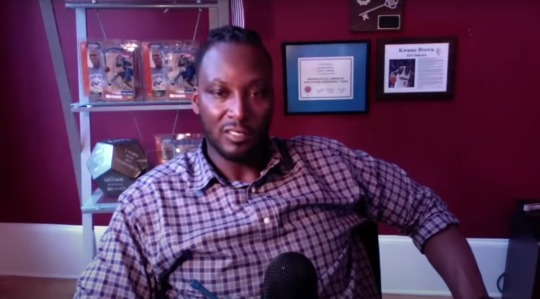
I love this.
I love when the mandem are talking breezy thinking that they can say whatever they want and then they get smacked in the mouth for it.
So as seems to happen very often in the NBA media, former NBA players turned podcast hosts, Stephen Jackson and Matt Branes went on their now well-known platform and made jokes about the long since retired Kwame Brown during an interview with former Wizards guard, Gilbert Arenas.
This time however things were different.
Kwame Brown has had a Youtube channel for the last 2 years now. I don’t blame anyone for not knowing about it because the guy doesn’t really market his channel. He runs it like an average joe with no resources, which is fine.
Kwame went on his channel and absolutely proceeded to air out Barnes, Jackson and Arenas. It was fun, it was entertaining but it was also eye-opening.

I can 100% see how NBA players are the type of guys that spend thousands of dollars on women and that they don’t have the emotional intelligence to really understand what type of timing these girls are on. Especially the type of girls that date pro-athletes.
Peep game, because guys in the corporate world sometimes deal with this same dynamic.
If I spend the majority of my youth on a basketball court or in an office, I’m sacrificing time. That’s time I could spend anywhere doing anything but it’s also time where I definitely won’t be having any kind of first hand experience with the opposite sex, you get me? So you work your ass off to get to a certain number/expendable income and when you finally get there, you’re still playing catch-up because these women are faster than you on a social level.
Their gamed up and you’re a square. This is what a lot of Kevin Samuels’ fanbase is dealing with.
Kwame went DEEEEP in his assassination of the two gentlemen. Citing that Barnes was once cuckolded by former Lakers point guard, Derek Fisher and that Stephen Jackson was known for dropping racks on women he don’t even know.
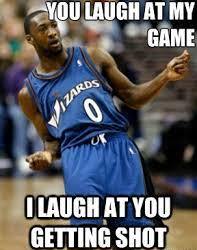
That man, Gilbert Arenas, should have kept his mouth shut.
Like bro has no right to ever speak on anyone else’s behavior. This fool recorded himself on camera jumping over the fence and entering Nick Young’s property a few years ago. He would have been in his late 30′s at that time. Gilbert can be captivating to listen to and he often is, but you always have to remember that bro is a knucklehead.
Kwame made a slew of great points and it’s funny how the perception of him as a man and a player changes once you hear the guy speak for himself.
Kwame also shed light on how Michael Jordan wanted him traded for Elton Brand back in 2001 and that the Wizards front office stopped it. That’s when reports of his injuries started to make the news and snow balled into people concluding he was a bust.
Jordan never wanted Kwame as his starting center and that’s why he made his life miserable. I want Kwame to talk more about the kind of power Michael Jordan had with people in the media because honestly it will shed a lot of light on how Jordan actually operates.

Let’s never ever forget about Stephen A Smith, he’s the guy that was responsible for a lot of the Kwame Brown slander.
I hope Kwame throws this dude from the top floor of a tall building for this bullshit. Stephen A actually had the nerve to go on ESPN’s KJZ show with Keyshawn Johnson and tried to defend this bullshit.
Stuff like this is why I’ve never aspired to be part of the corporate world and when you work for ESPN, it’s not like working in other aspects of film and television where you might be on location in different places. The job is way more corporate, depending on the specific show in question.
The thing is that the corporate world is a great place for fake tough guys. You can say things and no matter how heated the confrontation is, or how egregious the insults are, they’re probably gonna get away with it because there are never any direct and immediate consequences. So man will mouth-off all day.
No one in the history of people wearing matching shoes, has benefitted more from fake, corporate, tough guy-ism than Stephen A Smith. This dude is a clown.
What I hate most about your veteran sport television analysts is that they claim to be real journalists that got it out the mud. However, look at the media culture they’ve created. They piss and moan about how people should pay their dues and yet they violate so many journalistic principles every time you turn around.
The boy Skip Bayless was exposed by a Cowboys beat reporter named Mike Fisher, for years worth of lies that helped him rise to the top.
Stuff like this is why I can’t stand the older generation.
Every one of these guys, outside of Kwame, should have kept their mouths shut.
End of story.

15 notes
·
View notes
Text
Life lost in the club Pulse
Today and every day we remember 49 innocent victims lost 3 years ago in Orlando, June 12, 2016. part 1
Edward Sotomayor Jr, 34

Edward was a caring, energetic man known for wearing a silly top hat on cruises, Edward worked for a company that held gay cruises and often travelled to promote the company’s events.
Stanley Almodovar III, 23
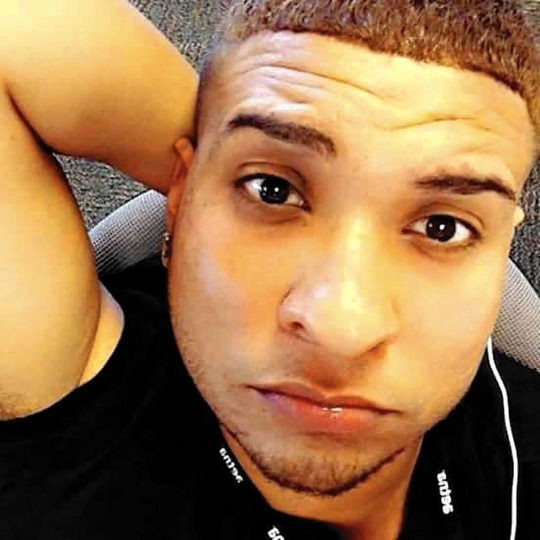
Stanley worked as a technician in a pharmacy, he was described as “good, but impudent” and a person who is not indifferent to his own sexual identity. "He was so proud of who he was."
Luis Omar Ocasio-Capo, 20

Luis described himself as a dancer on his Facebook account. Following the terrorist attack at the Bataclan theatre in Paris last year, he showed solidarity with the victims by adding a tricolour filter to his profile photo. A former teacher described him as a ‘ray of sunshine’.
Juan Ramon Guerrero, 22

Guerrero worked as a telemarketer, and was in school at the University of Central Florida. He was attending Pulse with his boyfriend, Christopher Andrew “Drew” Leinonen, who also died in the attack. “Juan and Drew were soul mates, and they were great together,”
Eric Ivan Ortiz-Rivera, 36

After moving to Florida from Puerto Rico for the chance of a better life, Eric , a merchandise manager, was said to have ‘sacrificed himself a lot for his family’, the Orlando Sentinel reported. ‘Eric was always willing to help everybody. He loved his brother, and he was always being generous.’
Peter O. Gonzalez-Cruz, 22

Peter worked for logistics company UPS in Orlando after graduating from Colonia High School. Originally from South Africa.
Luis S. Vielma, 22

Luis worked on the Harry Potter ride at Universal Studios, according to author JK Rowling, who said she could not ‘stop crying’ after hearing the news. Friends told the Orlando Sentinel that Mr Vielma was a ‘true friend’, and he had hoped to become an emergency medical technician. One, Olga Glomba, described him as ‘a funny, sweet, nerdy guy without a mean side. He just wanted to make people smile.’
Kimberly Morris, 37
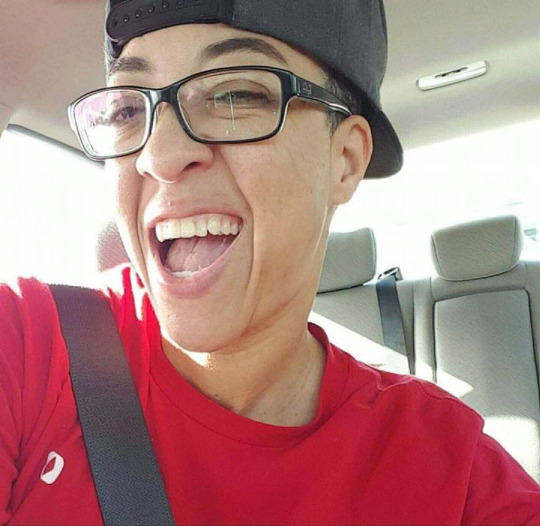
Morris, a bouncer at the nightclub, was a former basketball player at Post University in Connecticut. “She was tough and played hard on the basketball court but off the court she was all smiles.” “She always had a smile on her face,”
Franky Velazquez, 50

DeJesus was a professional dancer who had danced in Puerto Rico and had traveled the world. “Jimmy was lovable, outgoing,” his sister, Sarah Lopez, tells. “He was one of those guys that you wanted to be friends with, you know? One of those people who brightened a room when he walked in.
Xavier Emmanuel Serrano Rosado, 35

Rosado was the father of a 5-year-old child and also a professional dancer, specializing in salsa. Close friend tells that he used to dance for Disney and Universal Studios. “He was a great, great father,” she says. “He was just the most fun, happiest guy you could ever know.”
Javier Jorge-Reyes, 40

Jorge-Reyes had a passion for life, according to friend. Ortiz met Jorge-Reyes, who was originally from Puerto Rico, through her practice, and says, “He was so funny and so alive and savvy.” “He had an extreme talent for the arts and was very creative with makeup,” she shares.
Shane Evan Tomlinson, 33
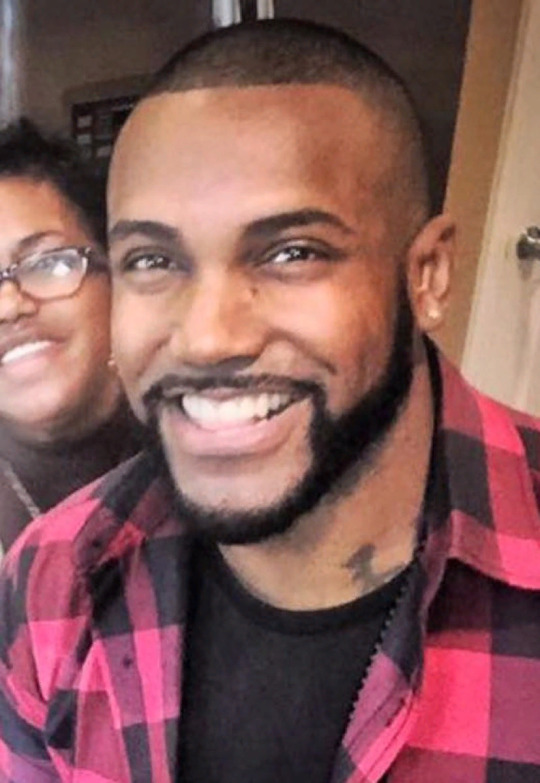
Tomlinson was a lead singer in Frequency Band, a local cover band that performed top 40 songs, according to longtime friend Jai Saint.
“He has a great voice, he is so popular around here. Honestly it’s hard not to enjoy his voice,” Saint tells of his best friend of 10 years. “He’s extremely positive, he’s all about life and living it to the fullest. He had amazing energy, which is hard to come by these days.” Tomlinson graduated from East Carolina University in 2003 with a Bachelor of Science degree in Communication with a minor in Business Administration.
Eddie Jamoldroy Justice, 30

Justice worked as an accountant and lived in downtown Orlando. He loved accessorizing with flashy jewelry and loved making others laugh. Justice’s mother Mina received texts from her son throughout the shooting as he hid in the bathroom. At one point he wrote, “He’s coming. I’m gonna die.”
Darryl Roman Burt II, 29

Burt was a member of the Jacksonville Jaycees, a young professional’s group in Florida. “He was personable, social and easy going,”. “Both socially and professionally he was always interested in making positive impact on people’s lives and in the community.” A hard worker, Burt had recently been recommended for a position on the Jaycee’s Board of Directors.
Deonka Deidra Drayton, 32

Drayton, had been through rough times, a friend tells, but was pulling herself together and was happy living in Orlando.
Anthony Luis Laureano Disla, 25

Disla was a talented dancer, who excelled in a variety of styles including salsa, mambo, tango or ballroom was in Orlando to pursue a career as both a dancer and choreographer. His mother, Olga M. Disla, tells: “He was lovely, kind and respectful of others all the time. He liked to help anyone who needed help.”
Jean Carlos Mendez Perez, 35

Perez, born in Puerto Rico, was obsessed with fitness and loved testing out new fragrances, Agudelo said. He met his longtime partner Luis Daniel Wilson-Leon at the store. Wilson-Leon was also a victim of the shooting. Friend Marisa tells, “Nicest guy you’d ever meet. Both of them, actually. They were magnetic. They’d walk into the room and everyone would turn to look, because they were just so handsome.”
Luis Daniel Wilson-Leon, 37

Wilson-Leon was the manager of a shoe store and longtime love of fellow victim Perez. “They faced the odds, Luis came from Puerto Rico and being gay isn’t totally accepted, obviously here, but it’s not totally accepted there as well,” his cousin Luis Wilson tells. “He is an inspiration. He grew up conflicted but found peace with himself and those around him and he finally had found acceptance and love. Finally found it. And now look.”
Amanda Alvear, 25

Alvear was attending school to be a nurse, and has recently been promoted to the lead pharmacy technician at the pharmacy where she worked, Shannon Marie Baxley, her sister-in-law, tells. “She loved the gay community, the LGBT community. She was straight herself but those were her people, those were her family. She was a magnetic person,” Baxley shares. “She was the loveliest girl, just the sweetest girl.”
Martin Benitez Torres, 33

Longtime friend of Torres, tells that he just had moved to Florida at the end of the last year to continue working for Hertz. He was also studying marketing at Sistema Universitario Ana G Mndez.
“He was one of a kind,” she shares. “He was always a person that you could talk to. He was our confidant. He was always surrounded by all of us. We were all women where we used to work, so we used to laugh with him, we used to cry with him. He was a good friend.”
Jerald Arthur Wright, 31

Wright worked in the Magic Kingdom at Walt Disney World. Another person who worked with him added that he was “hard-working” and “loved his job.” “He was one of the first to say hi and make us smile and laugh,”
Cory James Connell, 21
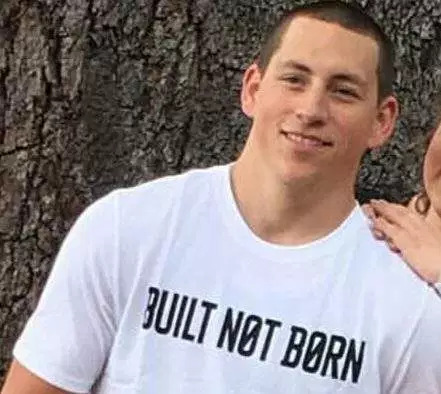
Connell enjoyed playing football and basketball and had dreams of becoming a firefighter. While still in pursuit of that dream, Connell studied at Valencia Community College in Orlando and worked stocking shelves at the Publix in Orlando’s Edgewater neighborhood.
Brenda Lee Marquez McCool, 49

McCool, was battling leukemia when her life was cut short, her niece, Neila Rodriguez, tells. At Pulse with her son Isaiah, McCool was shot in the back and told him to “just run, go.”
“She was a cool mom. She was really down-to-earth and open-minded.”
3K notes
·
View notes